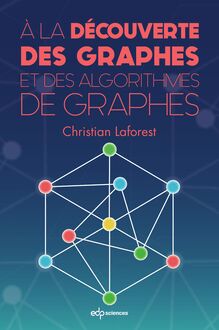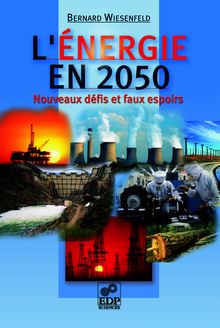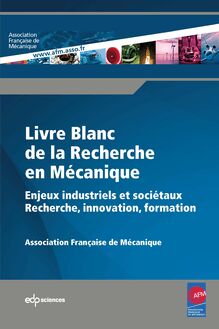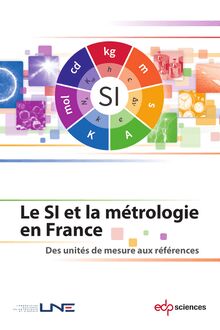Earth’s climate response to a changing Sun , livre ebook
230
pages
English
Ebooks
2016
Vous pourrez modifier la taille du texte de cet ouvrage
Obtenez un accès à la bibliothèque pour le consulter en ligne En savoir plus
Découvre YouScribe en t'inscrivant gratuitement
Découvre YouScribe en t'inscrivant gratuitement
230
pages
English
Ebooks
2016
Vous pourrez modifier la taille du texte de cet ouvrage
Obtenez un accès à la bibliothèque pour le consulter en ligne En savoir plus
Publié par
Date de parution
08 mars 2016
Nombre de lectures
0
EAN13
9782759820214
Langue
English
Poids de l'ouvrage
2 Mo
For centuries, scientists have been fascinated by the role of the Sun in the Earth’s climate system. Recent discoveries, outlined in this book, have gradually unveiled a complex picture, in which our variable Sun affects the climate variability via a number of subtle pathways, the implications of which are only now becoming clear.
This handbook provides the scientifically curious, from undergraduate students to policy makers with a complete and accessible panorama of our present understanding of the Sun-climate connection. 61 experts from different communities have contributed to it, which reflects the highly multidisciplinary nature of this topic.
The handbook is organised as a mosaic of short chapters, each of which addresses a specific aspect, and can be read independently. The reader will learn about the assumptions, the data, the models, and the unknowns behind each mechanism by which solar variability may impact climate variability. None of these mechanisms can adequately explain global warming observed since the 1950s. However, several of them do impact climate variability, in particular on a regional level.
This handbook aims at addressing these issues in a factual way, and thereby challenge the reader to sharpen his/her critical thinking in a debate that is frequently distorted by unfounded claims.
Publié par
Date de parution
08 mars 2016
Nombre de lectures
0
EAN13
9782759820214
Langue
English
Poids de l'ouvrage
2 Mo
Earth’s climate response to a changing Sun
Coordinated by: Jean Lilensten, Thierry Dudok de Wit, Katja Matthes
Editors: Thierry Dudok de Wit, Ilaria Ermolli, Margit Haberreiter, Harry Kambezidis, Mai Mai Lam, Jean Lilensten, Katja Matthes, Irina Mironova, Hauke Schmidt, Annika Seppälä, Eija Tanskanen, Kleareti Tourpali, Yoav Yair
COST (European Cooperation in Science and Technology) is a pan-European intergovernmental framework. Its mission is to enable break-through scientific and technological developments leading to new concepts and products and thereby contribute to strengthening Europe’s research and innovation capacities. It allows researchers, engineers and scholars to jointly develop their own ideas and take new initiatives across all fields of science and technology, while promoting multi- and interdisciplinary approaches. COST aims at fostering a better integration of less research intensive countries to the knowledge hubs of the European Research Area. The COST Association, an International not-for-profit Association under Belgian Law, integrates all management, governing and administrative 10 functions necessary for the operation of the framework. The COST Association has currently 36 Member Countries.
HYPERLINK “ http://www.cost.eu/ ” www.cost.eu
“COST is supported by the EU Framework Programme Horizon 2020”
Cover illustration: Sunset observed from the International Space Station - expedition 15 (NASA). Aurora at Svalbard, by Cyril Simon Wedlund (Aalto-University (Finland) and IPAG-CNRS).
Printed in France
ISBN: 978-2-7598-1733-7
DOI: 10.1051/978-2-7598-1733-7
This work is subject to copyright. All rights are reserved, whether the whole or part of the material is concerned, specifically the rights of translation, reprinting, re-use of illustrations, recitation, broad-casting, reproduction on microfilms or in other ways, and storage in data bank. Duplication of this publication or parts thereof is only permitted under the provisions of the French Copyright law of March 11, 1957. Violations fall under the prosecution act of the French Copyright law.
© EDP Science, 2015
Contents
Foreword
Preface
PART I. INTRODUCTION TO THE SUN-CLIMATE CONNECTIONS
1.1 The Earth’s atmosphere: an introduction
1.2 The impact of solar variability on climate
1.3 The Sun-Earth connection, on scales from minutes to millennia
1.4 The role of the Sun in climate change: a brief history
1.5 The role of the Sun in climate change: a societal viewpoint
1.6 The debate about solar activity and climate change
References of Part I
PART II. SOLAR AND SPACE FORCING
2.1 Basics of solar and heliospheric modulation
2.2 Solar radiative forcing
2.3 Variability of solar and galactic cosmic rays
2.4 Variability and effects by solar wind
2.5 Variations of solar activity
2.6 Understanding solar activity
INFOBOX 2.1 Orbital forcing of glacial - interglacial cycles
INFOBOX 2.2 Grand minima and maxima of solar activity
INFOBOX 2.3 A practical guide to solar forcing data
References of Part II
PART III. DETECTING SOLAR INFLUENCE ON CLIMATE
3.1 Observations on paleoclimatic time scales
3.2 Ground-based observations
3.3 Satellite observations
3.4 Reanalysis data
3.5 Uncertainties and unknowns in atmospheric observations: How do they affect the solar signal identification?
3.6 Numerical models of atmosphere and ocean
3.7 From climate to Earth system models
3.8 Uncertainties in the modeling of the solar influence on climate
3.9 Detection and attribution: How is the solar signal identified and distinguished from the response to other forcings?
INFOBOX 3.1 Why are models needed in the first place, and can they be trusted?
INFOBOX 3.2 Model Equations and how they are solved
References of Part III
PART IV. IMPACTS ON THE EARTH SYSTEM
4.1 Direct impact of solar irradiance variability
4.2 ‘Top-down’ versus ‘bottom-up’ mechanisms for solar-climate coupling
4.3 Interactions of different sources of variability
4.4 Impact of solar variability on the magnetosphere
4.5 Atmospheric ionisation by solar energetic particle precipitation
4.6 Impact of energetic particle precipitation on atmospheric chemistry and climate
4.7 The impact of cosmic rays on clouds
4.8 Impact of solar variability on the global electric circuit
INFOBOX 4.1 Modeled impact of total solar irradiance (TSI) forcing
INFOBOX 4.2 Lightning, cosmic rays and energetic particles
INFOBOX 4.3 The influence of solar variability on extreme weather
References of Part IV
PART V. CONCLUSION
Conclusions
References of Part V
Glossary
The authors
FOREWORD
Roger-Maurice Bonnet 1
1 Why did I accept to write this foreword?
As former solar astronomer, and member of the Service d’Aéronomie of CNRS in France (now renamed LATMOS), I am since long deeply involved in – and motivated to – understanding the role of the Sun on the Earth’s climate . However, when Thierry contacted me for writing this foreword, I had some hesitations before answering positively. The response of our climate to the changing Sun has been passionately debated at length among the concerned scientists, solar physicists, meteorologists, climatologists, and many non-specialists, and these debates often made me uncomfortable. The topic deserves indeed a lot of care and its scientific analysis an utmost rigor, both too easily overwhelmed by irrationalism and passion. Why that passion? The issue is not the Sun, a modest G-type star fairly well understood, but rather the climate of our Earth, the most complex of all planets in the Solar System because it is a water planet, because it has an atmosphere and hosts life, particularly human life, the whole set resulting in an incredibly complex system permeated by complex interactions, which make other planets, like Mars for example, look very simple. That is where the problem lies!
The 20th century has witnessed a quasi-exponential growth of the world population followed by a similar growth of the demand on energy necessary to sustain its needs, and of course on fossil fuels, the cheapest source and admittedly the largest producer of CO 2 , whose efficient greenhouse effect might be the most powerful cause of the changes observed in the recent evolution of the Earth’s climate . Hence the debate! Those who trust in a solar effect are right: nobody would argue that without the Sun, life would not exist on Earth in its present form at least. Nobody would argue against Milankovi ’s theory that describes the collective effects of changes in the Earth’s orbital movements upon the climate , and that winters are colder than summers. On the other side, few would argue against paleoclimate studies concluding that without the greenhouse effect of methane and carbon dioxide in the atmosphere of the young Earth, when the Sun output was 70% fainter than at present, our planet would have remained a cosmic snowball for ever. Those who doubt that the present growth in the concentration of atmospheric greenhouse gas is largely responsible for the observed changes, naturally receive the support of those who do not like the idea that Man’s activities might be the cause of the present climate problem, because the remedy to anthropogenic forcing would responsibly imply adopting profound changes in our dealing with industrial activities, fossil fuel production, economy, and in our social systems. The “business-as-usual” attitude is indeed less disturbing in the short range than accepting the necessity of such changes!
In the course of last century and also recently, nearly all the wars on the planet have oil in their background. The fight for oil is indeed a serious matter: oil is relatively cheap and a source of immense revenues. The scientists therefore bear a crucial responsibility in placing the debate between natural and anthropogenic causes of climate change on solid irrefutable rationale grounds. As a scientist accepting that responsibility, I consider that careful attention should be given to the reasoning of the skeptics on both sides, in their expressing doubts about the other camps arguments. Not only because Thierry is a dear friend and colleague but also a man of high scientific rigor whom I fully respect, and because of what precedes, I eventually accepted to write these lines.
2 A surprising document
This monograph, built from some 30 contributions involving more than 60 authors, is surprisingly diverse and non-uniform. That is probably the usual form of reporting that characterises European COST actions, which intend to offer means of intellectual exchanges, be they of a scientific, technological, sociological or political nature using all possibilities of networking between selected members of the respective communities. The topic of this work responds quite exactly to that definition! Its final success would be reached when those involved would eventually concur that solar variability in all its forms does have effects on the Earth’s climate , agree on what these effects are, and what are their intensity. To reach that goal, interdisciplinarity is essential and that might not have been so easy to implement, remembering the idiosyncrasy that for a long time has characterised parts of the communities involved. Undoubtedly, this report testifies that this goal was achieved and all the participants to this impressive effort must be congratulated. In that respect, it is important to appreciate the participation of a relatively large number of young scientists whose opinions are remarkably open and far from being biased by corporate protective behavior. They undoubtedly contributed in no small way to approach the Earth not anymore as a set of independent layers, an onion, but rather, as the great French poet Paul Eluard would say, like a “blue orange” inside which all layers interact, forcing the fall of the tight barriers that for a long














